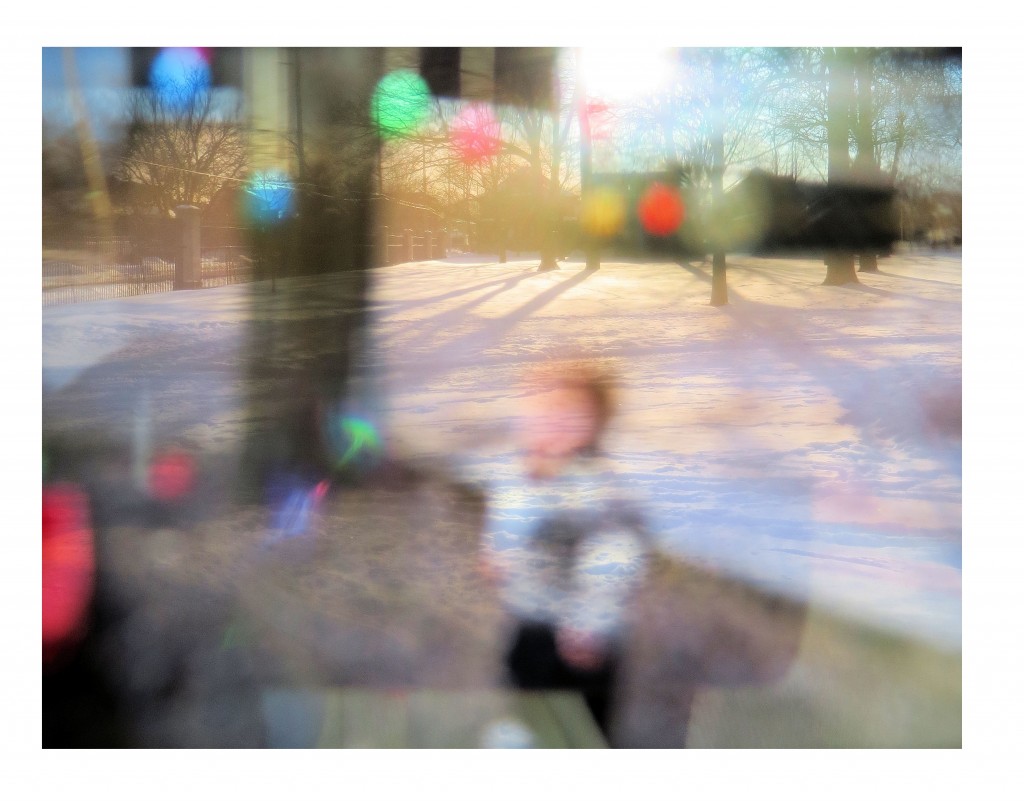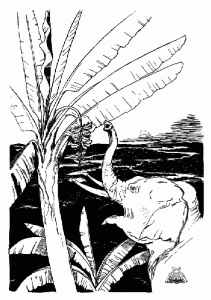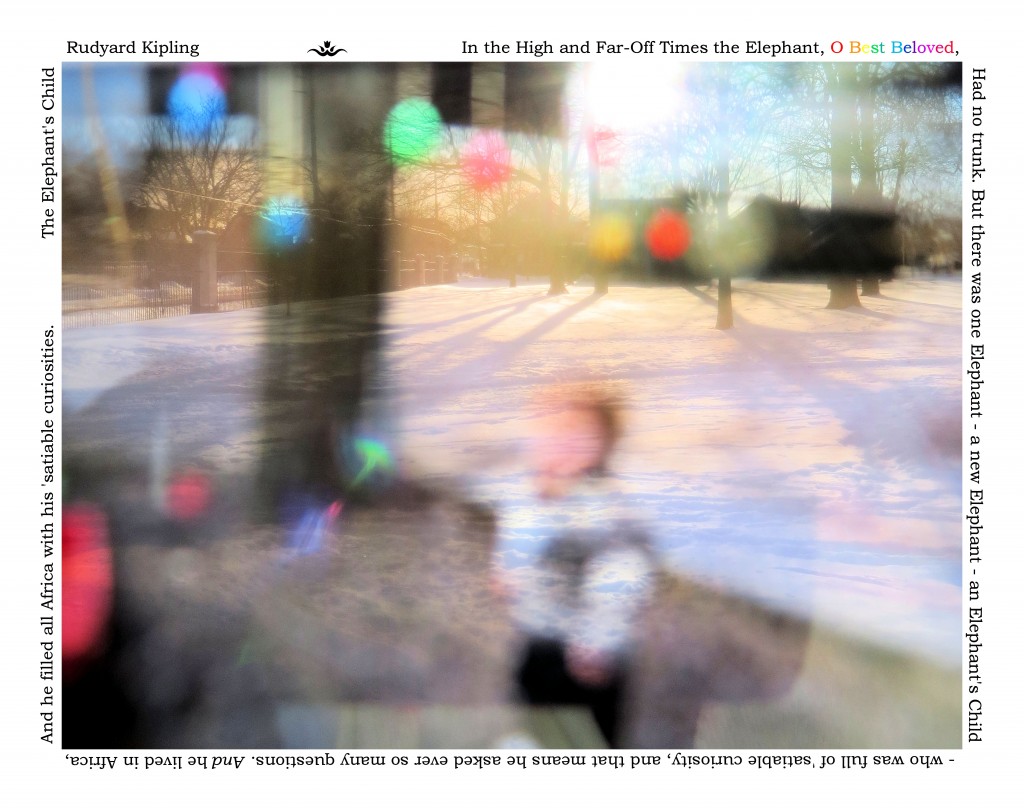Choose a passage from a fiction novel wherein the portrait of a character is described. Wait for further instructions.
At this point in time, I’m pretty well adjusted to choosing a source of inspiration before knowing the criteria for an assignment. It’s all about the gut. You think of an idea, something deep in your core shifts, the idea is settled upon, and then you hope for the best. I initially considered something from Jane Eyre or Cat’s Cradle, possibly my two favourite books of all time, but I decided I might be too emotionally attached to them to be open to all the possibilities of expression. As it turned out, this was a very good choice.
My next choice, and the one I would settle upon, was Rudyard Kipling’s The Just So Stories. Kipling is best known for having written The Jungle Book but also among his collection of works, is a book of comical fables, telling the origins of things like the Leopard’s spots or the Rhinoceros’ wrinkles. These are the Just So Stories. For those of you who have never read the book, the Just So Stories are beautiful little pieces of literature, filled with childlike humour and absurd phenomena (like the Rhino’s ability to remove his skin) that speak to the wondrous, magical way in which we understand the world as children. Kipling addresses his stories to “O Best Beloved” which added a bitter tenderness to the book (Kipling, who lost his daughter Josephine to pneumonia, is thought to have been referring to her).
The passage I chose was from The Elephant’s Child, the story that tells us how the elephant got its trunk. In it, Kipling repetitively refers to the ” ‘satiable curiosities” of the Elephant’s Child, the Elephant whose endless questions lead him to the edge of the Limpopo River and his nose to the mouth of the Crocodile. It was the tenderness of parental love, and the childlike wonder and curiosity that lead me to this passage:
“In the High and Far-Off Times the Elephant, O Best Beloved, had no trunk. He had only a blackish, bulgy nose, as big as a boot, that he could wriggle about from side to side; but he couldn’t pick up things with it. But there was one Elephant–a new Elephant–an Elephant’s Child–who was full of ‘satiable curiosity, and that means he asked ever so many questions. And he lived in Africa, and he filled all Africa with his ‘satiable curiosities.”
Convey your chosen passage through conceptual photography without illustrating it.
What is conceptual art? Well you’re going to have to Google it yourself because I am not taking that on. Basically what you need to know is that all things elephant were out. I put away the plastic elephant figurines and the plush elephant puppet from my childhood and started a new.
When in doubt, dig through the basement. This has become my new modus operandi. There I came upon our family’s old collection of slides. In the past, if you wanted to preview your pictures before printing them, you had them made into slides. You also did this if you wanted to bore regale your family with photos from your travels. We have slides from my aunt’s 1960s tour of Europe, pictures of my parents from the 1970s and 80s and a small collection from my childhood. But I have digressed.
On a whim, I took a quick shot of my dinning room with a slide pressed against my camera lens. Lo and behold, I liked the effect, a lot! It had an otherworldly quality that gave me the nostalgic feel I was going for.
I headed for a local park with my selection of slides, most of my brother and I as toddlers, playing outside our old house. Out of the multitude of photos, a number appealed to me but, under the guidance of my teacher, I narrowed it down to one.
I learned a very important lesson from this project that I would like to share: if you are showing a series of pieces, each should bring a new element to the overall work. There is no point to showing a series of three images if they all make the same point, it just muddies the message.
The slide I used for my final piece is of my younger brother, at around the age of 18 months, at Easter time, standing in our front yard, with plastic eggs hanging from the tree above. I particularly love the bright colours and the weblike branches of the trees from the background.
I included the quote around the exterior due to the attachment I’d developed to the passage, specifically ‘O Best Beloved’. I twisted it around the image because I found it playful and wanted to force my viewers to turn their heads about in the way a child would.
In the critique of my work, the photo was well received. My classmates like my creative approach to shooting through slides. The one criticism I did get was a general dislike of the text, that it was unnecessary, that my message was strong enough without it. Flattering but slightly frustrating. That is until my teacher suggested I include the passage in audio form. So for everyone’s viewing (and listening) pleasure, I have my completed work with optional audio.

His ‘Satiable Curiosities (narration by David Davis, originally recorded by the BBC for the Children’s Hour)

